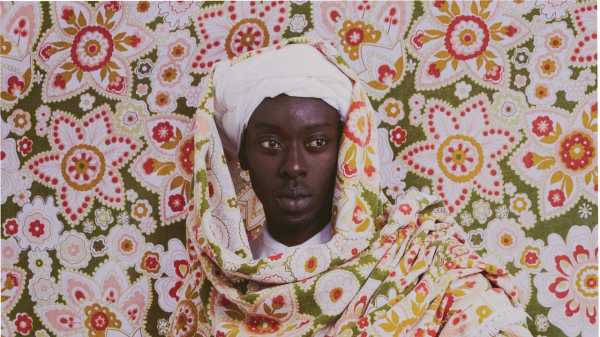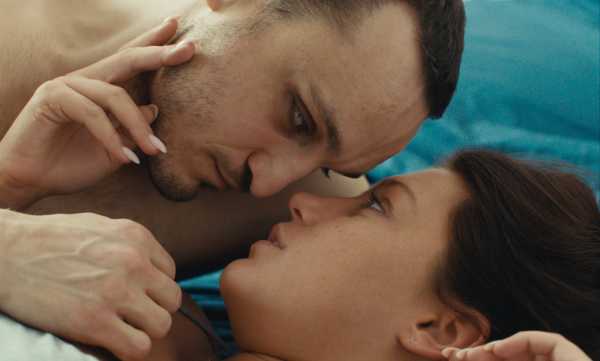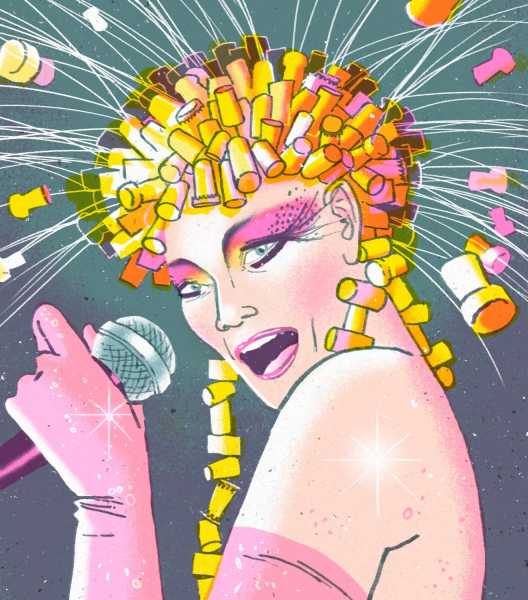
Save this storySave this storySave this storySave this story
Shauna Lyon
Goings On editor
You’re reading the Goings On newsletter, a guide to what we’re watching, listening to, and doing this week. Sign up to receive it in your in-box.
Welcome to the new Goings On newsletter, in which we bring our incisive, thoughtfully considered list of the best and most intriguing happenings in culture directly to your in-box. This new iteration of Goings On replaces our previous culture newsletter, The New Yorker Recommends, and marks the evolution of our iconic Goings On About Town section—which was in the very first issue of the magazine, in 1925, titled “Goings On: The New Yorker’s conscientious calendar of events worth while.” From the very beginning, the listings, covering art, the theatre, moving pictures, and dinner-and-dancing venues, were quippy, incredibly cheeky, and brutally astute. The new Goings On will hark back to those roots, recalibrated for the needs of the digital culture seeker.

Illustration by Christoph Niemann
Each week, the newsletter begins with a consideration, by one of our writers, of current cultural happenings—from the latest eighties-movie theatrical adaptations (will Broadway audiences love “Back to the Future: The Musical” as much as those on the West End did?) to the blockbusters dominating the conversation (is it just me, or is it starting to feel like Oppenbarbie may never go away?). Spotlight features one can’t-miss event of the week; in About Town, our critics review the latest cultural events across various disciplines and highlight the ones worth checking out. For Pick 3, a new feature inspired by a segment on “The New Yorker Radio Hour,” writers expound on their latest obsessions—this week, Michael Schulman gives his shortlist of under-the-radar alternatives to mainstream entertainment.
Consider Goings On your weekly guide to what’s new and interesting in art, music, TV, podcasts, movies, books, and more, not only in New York City but also beyond the city’s borders, including online—after all, so much of our culture today can be found right on our phones. But the Goings On ethos remains the same: astute, snappy previews and critical reviews, offering an arts primer, a piquant snapshot of the day’s cultural scene, and, perhaps, ideas for your after-work or weekend plans. Thank you, as always, for reading.
Spotlight

Photograph by Omar Victor Diop / Courtesy Brooklyn MuseumArt
The vital and necessary exhibition “Africa Fashion” (at the Brooklyn Museum, through Oct. 22) gives viewers the opportunity to examine garments—and attendant conceptions of self-presentation—that amount to a very particular way of being that doesn’t necessarily exclude colonial influence. African designers ranging from Kofi Ansah to Imane Ayissi took ideas from Europe, and from the rest of the world, to make their remarkable work, just as the world has for so long taken from Africa. All this is enhanced by the influence of clothing, objects, and hair styles indigenous to each designer’s home region. Africa is not one place, and the curators Ernestine White-Mifetu and Annissa Malvoisin provide the space to embrace its multiplicity.—Hilton Als

About Town
Pop Music
If the sugar-rush bliss of Carly Rae Jepsen’s first hit single, “Call Me Maybe,” evokes teen-aged mania, the music she has released since offers more nuanced pleasures. The same longing that defines her smash hit lingers throughout her discography, but her songwriting has become significantly more refined. The crown jewel of her catalogue, “Emotion,” channels its title, matching the passion of its eighties-inspired sound. Existing alongside her trove of warm pop LPs is a series of B-sides that riff on her ideas of dance pop and disco. With another companion record imminent—“The Loveliest Time,” mirroring her quarantine album, “The Loneliest Time”—Jepsen embraces a never-ending yearning.—Sheldon Pearce (The Rooftop at Pier 17; Aug. 7-8.)
Broadway
For “Here Lies Love,” David Byrne’s mix of morality play—about the rise and fall of Imelda Marcos—and G-rated rave, an impressive team, led by the director Alex Timbers, reconfigured Broadway’s barn-iest theatre into a warehouse-style disco. Imelda (Arielle Jacobs), her co-despot, Ferdinand (Jose Llana), their foil Ninoy Aquino (Conrad Ricamora), and Broadway’s first all-Filipino cast sing catchy songs (by Byrne and Fatboy Slim) about, essentially, propaganda and graft as they invite the dance-floor crowd to boogie along. The audience initially fills in, visually and dramaturgically, as the Marcos-loving masses, then as the protesters who toss the autocrats out, yet the fundamental disjunction never resolves. Amid the aesthetic ravishments, it’s hard to forget that Imelda’s cardinal sin was greed—and “Love” itself is an exercise in ecstatic excess.—Helen Shaw (Reviewed in our issue of 7/31/23.) (Broadway Theatre; open run.)
Contemporary Dance

Photograph by Stephanie Berger
Mark Morris Dance Group has been a beloved New York institution for decades, but it’s only now making its début at the Joyce. Though these amiable dancers are at home on opera-house stages, it’s a special pleasure to see them in a smaller venue, where their unpretentious excellence can register at close range. Both weeks of the run feature strong and varied programs, but week two has the sole world première—the punningly titled “A minor Dance,” set to a Bach partita. It also features a revival of “Castor and Pollux,” the finale of the group’s first concert, in 1980, which has since been performed in only one other run of shows, in 1981. Set to a score, by Harry Partch, of unusual percussion in uncommon meters, it looks like an invented folk dance performed with rhythmic exactitude and tossed-off physicality—an early example of Morris magic.—Brian Seibert (Joyce Theatre; Aug. 1-12.)
Classical Music
“Nobody wants the young English composer,” Ralph Vaughan Williams wrote in 1912. “He is unappreciated at home and unknown abroad.” Vaughan Williams was challenging himself and others to forge a specifically British musical identity, and the two-week Bard Music Festival, part of Bard SummerScape, explores his success in that endeavor as a composer of refined sentimentality. The first weekend of programs surveys Vaughan Williams’s elegantly turned hymns and chamber music alongside his more vigorous orchestral work; it ends with a celebration of popular song—with pieces by Noël Coward, Ivor Novello, and others—that would surely have delighted the man who exhorted composers to head out to halls to hear the music of the people.—Oussama Zahr (Annandale-on-Hudson, N.Y.; Aug. 4-6.)
Movies

Photograph courtesy MUBI
The veteran American independent filmmaker Ira Sachs’s passionate movie-world melodrama “Passages” stars Franz Rogowski as Tomas, a German director who lives in Paris with his husband, Martin (Ben Whishaw), a printer. Tomas begins an affair with a schoolteacher named Agathe (Adèle Exarchopoulos); Tomas and Martin separate on bitter terms but soon rekindle their mutual lust. The couples’ long, ardent, and elaborately choreographed sex scenes are as character-centered and nuanced as the film’s finely crafted dialogue. Tomas’s erotic energy and reckless intimacy come off as inseparable from his work—he’s as productive of drama in his life as he is in his films. Sachs’s vision of artistic and romantic freedom, complete with its painful complications, rises to a peak of exultation, with a thrilling needle-drop to match.—Richard Brody (In limited release.)

Pick Three
Recommendations from the staff writer Michael Schulman.

Illustration by Jasjyot Singh Hans
1. Best alternative to the summer pop playlist: The performance artist Taylor Mac is an avant-garde maximalist whose most ambitious project to date was a daylong live concert covering nearly two and a half centuries of American popular song. Mac, dressed in high-concept drag created by the designer Machine Dazzle, reinterpreted everything from “Yankee Doodle Dandy” to “Purple Rain.” If you missed the show, don’t worry: Rob Epstein and Jeffrey Friedman captured it in their bracing, joyous documentary “Taylor Mac’s 24-Decade History of Popular Music,” now on Max.
2. Best alternative to “Barbie”: Before the world’s preëminent fashion doll got a feminist consciousness-raising from Greta Gerwig, an Arkansas housewife named Thelma learned to stand up to the patriarchy from her friend Louise. Ridley Scott’s “Thelma & Louise” was a lightning rod in 1991, and it still retains its gumption and its thrill. A new 4K restoration screens at Film Forum on Aug. 4, with an introduction by Karina Longworth, who delved into the film and its cultural moment on her podcast, “You Must Remember This.”
3. Best alternative to the big top: Bard SummerScape, the risk-taking festival up in Annandale-on-Hudson, New York, is once again hosting the glittering, mirrored Spiegeltent. A few weeks ago, I saw a ribald comedy night there hosted by Jeff Hiller (“Somebody Somewhere”), followed by a dance party. Next week, Aug. 11-12, the downtown misfits John Cameron Mitchell and Amber Martin co-host their alt-cabaret show, “Cassette Roulette.”
P.S. Good stuff on the Internet:
- A dispatch from Dead & Company’s final show
- The best books on environmental history
- A performance of “After the Gold Rush” on Letterman
Sourse: newyorker.com






